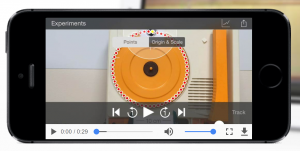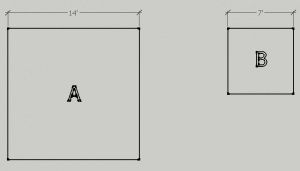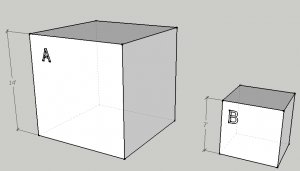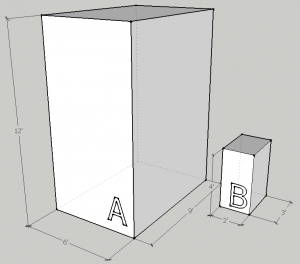Calculus is notorious for frightening students away from higher math and because it is “too difficult” or “too abstract”. This does not have to be the case. Calculus can be made approachable and tangible.
The idea for the lesson below introduces rate-of-change to students with hands-on engagement. Students will be analyzing the motion of a ball to understand how physical objects experience rate-of-change.
For this exercise, students will need to form small groups. Each group will be given a worksheet (how many is at the digression of the teacher), a small ball that should fit  comfortably in one hand, a foot-long ruler, and an iPad with the Video Physics app installed on it. Video Physics is an app created by Vernier. The app can only be installed on Apple devices, and will cost $4.99. However, if the app is purchased, it should be easy to install on all of the iPads if they are all linked to the same account. More information can be found here.
comfortably in one hand, a foot-long ruler, and an iPad with the Video Physics app installed on it. Video Physics is an app created by Vernier. The app can only be installed on Apple devices, and will cost $4.99. However, if the app is purchased, it should be easy to install on all of the iPads if they are all linked to the same account. More information can be found here.
Groups will use Video Physics to videotape the ball rolling off a desk and observe its velocities in the x and y-directions. Based off the videotape, and some student input, the app will produce two graphs with equations: rate of change along the x-axis, and rate of change along the y-axis. Based on this information, students will fill in two plot maps with vectors representing the velocity for each axis. Students will notice that the velocity of the ball along the x-direction does not change, but along the y-direction it does. Furthermore, this change can be graphed using the slope formula!
By using tools students already have, calculus can be easily introduce by showing rate-of-change with velocities relationship to acceleration. Students won’t be working out derivatives or integrals of equations in this lesson, but understanding rate-of-change can be measured is a large conceptual hurdle that will be met by this lesson.
Pre-made Material: AnalyzingMovementExercise_Worksheet-1kw8fvm
Common Core associated with this lesson:
- CCSS.Math.HS.F-IF.4 – For a function that models a relationship between two quantities, interpret key features of graphs and tables in terms of the quantities, and sketch graphs showing key features given a verbal description of the relationship.
- CCSS.Math.HS.F-IF.6 – Calculate and interpret the average rate of change of a function (presented symbolically or as a table) over a specified interval. Estimate the rate of change from a graph.





